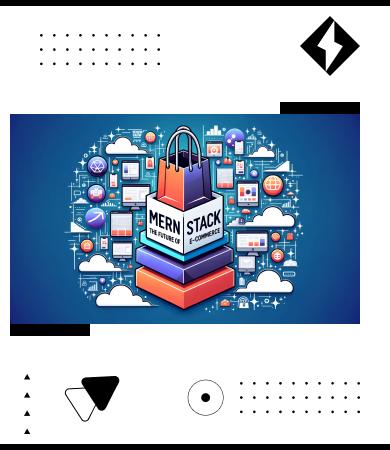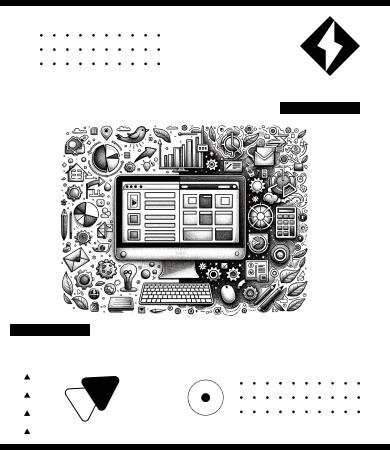Support center +91 97257 89197
Web DevelopmentNovember 7, 2023
The Future of Web Development: Predictions for the Next Decade

Introduction:
The frontier of web development is rapidly expanding, driven by relentless innovation and technological advancement. Over the past ten years, we've witnessed remarkable transformations, from the rise of mobile-first design to the advent of progressive web apps (PWAs). As we stand on the cusp of a new decade, it’s crucial for industry professionals, from developers to business strategists, to forecast and comprehend the emerging trends that will redefine the landscape. This foresight is not merely about staying current—it’s about being proactive in a competitive marketplace.
1. The Ascendancy of Progressive Web Apps (PWAs):
Progressive Web Apps represent a harmonious fusion of mobile and web applications, delivering offline functionality, push notifications, and native-like capabilities. Their flexibility and focus on user experience position them as an attractive solution for businesses looking to capture the mobile-centric market. With mobile browsing steadfastly outpacing desktop, the future could see PWAs setting the new standard for mobile web interaction, further diminishing the distinction between what is native and what is web-based.
2. Serverless Architectures and the Cloud Renaissance:
Serverless computing, a term that metaphorically signifies the end of traditional server management, refers to a development model where cloud providers dynamically allocate and manage the computing resources needed for application execution. This transformative approach allows developers to direct their full attention to crafting code, minimizing operational complexities, and scaling efficiency. With industry leaders like AWS Lambda and Azure Functions at the helm, the proliferation of serverless computing seems inevitable.

3. WebAssembly (Wasm) Emergence:
Touted as a revolutionary leap forward, WebAssembly enables developers to compile code from languages such as C, C++, and Rust to run on the web at speeds comparable to native applications. This advancement is poised to set new performance standards across the board, particularly in resource-heavy domains like gaming, augmented and virtual reality (AR/VR), and complex web applications. The future is likely to witness an expanded repertoire of languages that can compile to Wasm, further diversifying the technological ecosystem of the web.
4. The Intersection of AI and Web Development:
Artificial Intelligence has begun to make its mark on web development, automating routine tasks and tailoring user experiences with unprecedented precision. In the near future, we can expect AI-driven solutions capable of designing entire websites based on user interactions, optimizing testing protocols, and generating content autonomously. The amalgamation of AI and web development promises a new era of web experiences—more intuitive, personalized, and efficient than ever before.
5. The Component-Based Architecture Revolution:
The paradigm shift toward breaking down applications into reusable, manageable components has been a transformative strategy. Frameworks like React and Vue.js are the vanguards of this methodology. This architectural modularity doesn't just accelerate development—it substantially improves maintainability and scalability. As micro-frontends and component libraries continue to evolve, this approach will further solidify its presence in web development.
6. The Momentum of Single Page Applications (SPAs) and Jamstack:
Single Page Applications have made their mark by providing smooth, uninterrupted user experiences. When coupled with the Jamstack architecture, which involves pre-rendering content and decoupling front and backend layers, websites achieve unparalleled speed. With site performance and security being paramount, the convergence of SPAs and Jamstack is expected to accelerate, becoming a prevalent force in the development world.
7. Integrating AR and VR into Web Experiences:
Augmented and Virtual Reality are stepping out of their traditional gaming confines and entering the web space. Browser technologies are rapidly advancing to accommodate AR/VR capabilities, providing businesses with new avenues for immersive demonstrations, virtual tours, and interactive narratives. As the decade progresses, the integration of web-based AR/VR could shift from an innovative feature to a fundamental component of web experiences.
8. Prioritizing Web Accessibility:
Web accessibility is a commitment to inclusivity, ensuring that digital resources are usable by all, irrespective of their abilities. The growing emphasis on awareness and the tightening of regulations demand that developers place a high priority on crafting universally accessible websites. This not only enriches user experience but also offers significant advantages for businesses by widening their audience reach.
9. Responsive Design’s Evolution:
While responsive design has traditionally focused on screen size adaptability, the horizon points toward designs that respond to user preferences and environmental conditions, such as dark mode or reduced motion preferences, and even ambient lighting. The integration of advanced sensors and AI could lead to a new standard of responsiveness, one that is acutely attuned to the user’s context and needs.
10. The Quantum Leap in Web Development:
Quantum computing, though still in its exploratory phase, possesses the capability to transform the very foundations of computational science. Its prospective impact on web security, encryption, and performance optimization is monumental. For visionary web developers, keeping abreast of quantum computing breakthroughs is not just intriguing—it’s essential for staying ahead in the tech curve.
The dynamic and ever-changing universe of web development is continuously outdoing itself, each new wave of innovation eclipsing the last. As we look toward the decade ahead, the projections outlined here serve as navigational beacons on this exciting journey. By embracing these changes and relentlessly striving for excellence, we can craft a digital future that’s not only more capable but also universally engaging and remarkable.
We’re eager to hear your thoughts on the future of web development. Join the dialogue, share your visions, and make sure you’re prepared to meet the future head-on.
TLDR
The future of web development promises exciting advancements. Key trends include the rise of Progressive Web Apps, which may dominate mobile app development, and the growth of serverless computing backed by major cloud providers. WebAssembly will enhance web performance for complex applications, while AI will automate web development tasks and refine UI/UX designs. The industry will also see a shift towards component-based architecture, Single Page Applications combined with Jamstack, and immersive AR/VR web experiences. As inclusivity becomes paramount, there will be a more significant emphasis on web accessibility. The next phase of web design will adapt beyond devices, focusing on comprehensive responsive designs. Lastly, the potential of quantum computing could reshape web security, encryption, and overall performance.
FAQs
A Progressive Web App (PWA) is a web application that provides a native app-like experience on the web. It offers offline capabilities, push notifications, and can be added to a device's home screen. PWAs are vital for the future because they combine the best of web and mobile apps, offering improved performance, accessibility, and user engagement without the need for app store approvals.
AI is set to automate numerous web development tasks, such as optimizing images, generating code, and personalizing user experiences. Moreover, AI-driven tools will play a pivotal role in enhancing UI/UX designs, predicting user behavior, and even automating content creation, making websites more user-centric and efficient.
WebAssembly (Wasm) is a low-level binary instruction format that acts as a virtual machine for executing code nearly at native speed. It allows developers to run languages other than JavaScript on web browsers. Wasm can greatly improve web performance, especially for computationally intensive tasks or applications, enabling more powerful web apps and games.
While quantum computing is still in its infancy, its potential implications for web development are vast. It could revolutionize data encryption and security, making current encryption methods obsolete. Furthermore, the incredible computing power of quantum machines might enhance web performance, processing, and even AI-driven web functionalities, pushing the boundaries of what's possible online.
Web accessibility ensures that websites and web applications are usable by everyone, including people with disabilities. With rising awareness and potential regulations, there's a push to create more inclusive web experiences. Emphasizing accessibility not only caters to a broader audience but also enhances the overall user experience and could positively affect search engine rankings.
Work with us







